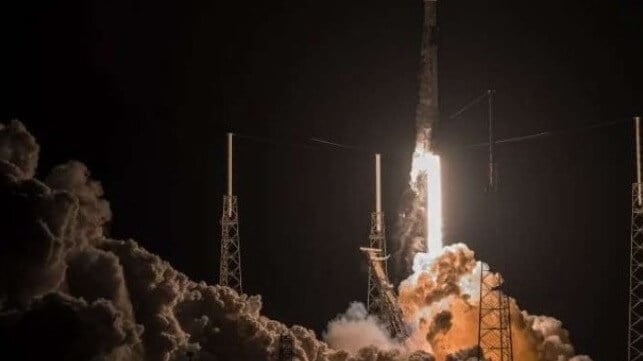
By Brett Keil
Promptly at 10:59 PM on Friday, February 17, 2023, Inmarsat’s newest satellite, the I-6 F2 launched via the SpaceX Falcon 9. It left the planet from Space Launch Complex 40 (SLC 40) at Cape Canaveral, Florida. This was SpaceX’s 211th launch and its second of the day, with the earlier launch from Vandenberg Space Force Base, California.
The similarities between the maritime and space industries are increasing daily. Commercialization of rocket launches has made launching more affordable, safer, and timelier. SpaceX’s spacecraft, boosters and even the payload fairings are reusable. This has changed the way rockets are built and launched. Thanks to these and other innovations, efficiency has improved greatly while costs have decreased significantly. Modern rockets like the Falcon Heavy deliver cargo to the International Space Station (ISS) like liner services here on Earth.
The parallels between deploying Inmarsat’s 1-6 F2 satellite are analogous to the offshore exploration sector. Just as deepwater exploration companies deploy UUVs in our oceans, SpaceX and Inmarsat are doing this in our solar system, as are their competitors.
The Inmarsat I-6 F2 satellite is the second in its series. Its sister, the I-6 F1, was launched back in 2021. These satellites are used by the maritime and aviation industries, militaries and even in fighting wildfires. These satellites will improve Global Xpress to protect mariners all over the world. They will also support ELERA IoT, designed to enhance the internet of things (IoT) framework.
The previously launched F1 provides coverage over the Indian Ocean, while the recently launched F2 will cover the Atlantic Ocean once it is successfully in orbit seven months from the launch date. It takes seven months for the solar-powered rocket to push the F2 to its geostationary orbit slowly.
What is most impressive at any SpaceX launch is the return of the first stage (booster) back to Earth, 500 km from the launchpad. In this case, one booster safely and promptly landed back on SpaceX’s drone ship named Just Read the Instructions. The booster rocket lands back on the drone ship completely autonomously and can do it in up to 10’ seas. This is a tremendous milestone for autonomous air and sea vessels.
https://news.google.com/rss/articles/CBMiaGh0dHBzOi8vbWFyaXRpbWUtZXhlY3V0aXZlLmNvbS9hcnRpY2xlL2lubWFyc2F0LWktNi1mMi1taXNzaW9uLXN1Y2Nlc3NmdWxseS1sYXVuY2hlcy1mcm9tLWNhcGUtY2FuYXZlcmFs0gEA?oc=5
2023-02-22 15:02:38Z
1778271592
Tidak ada komentar:
Posting Komentar